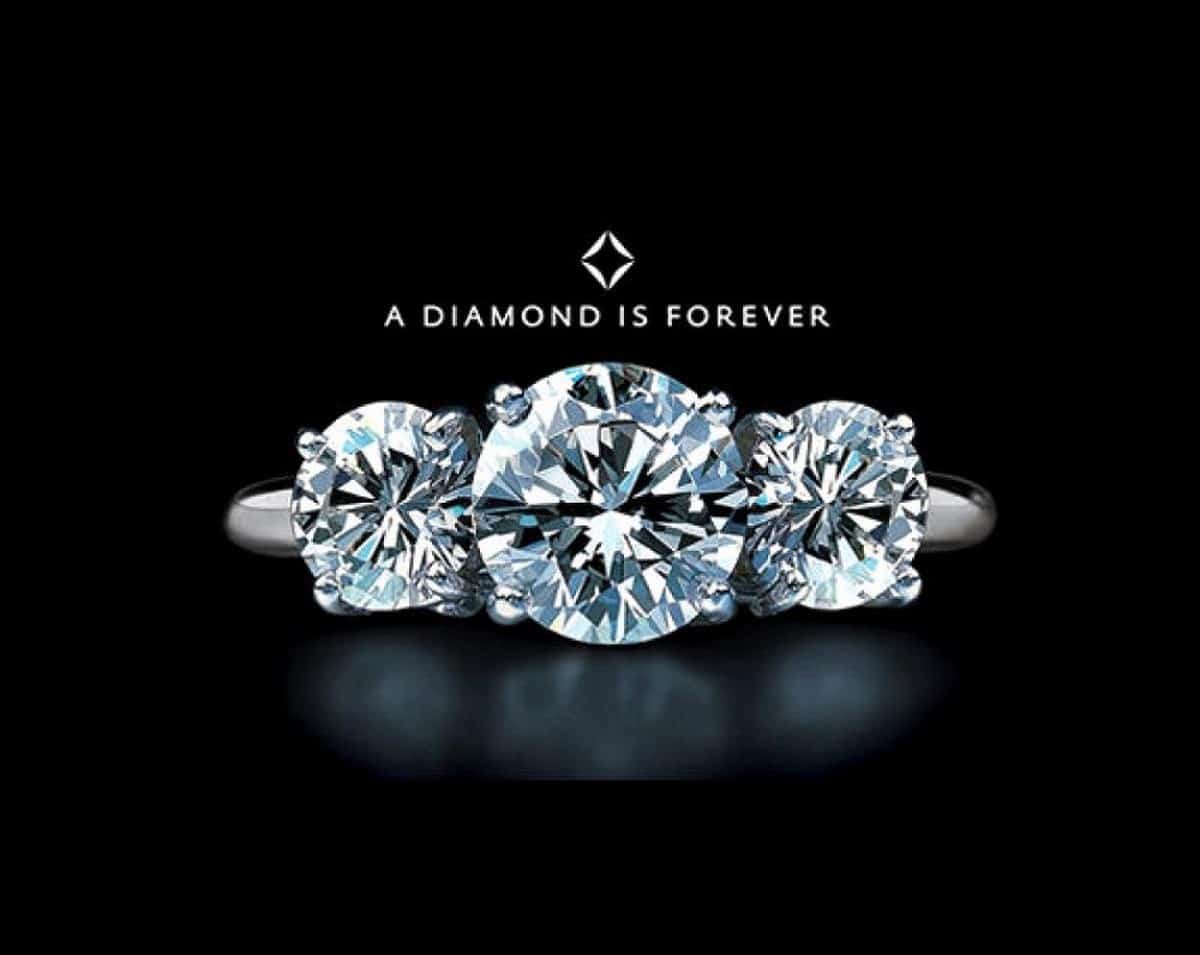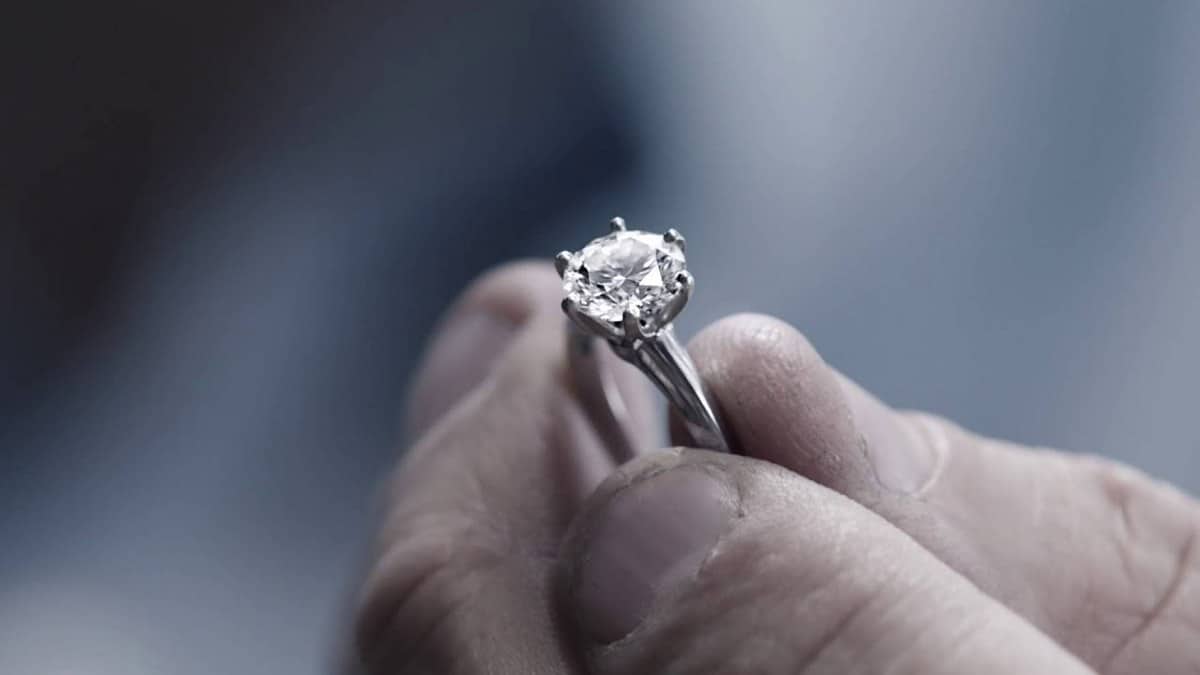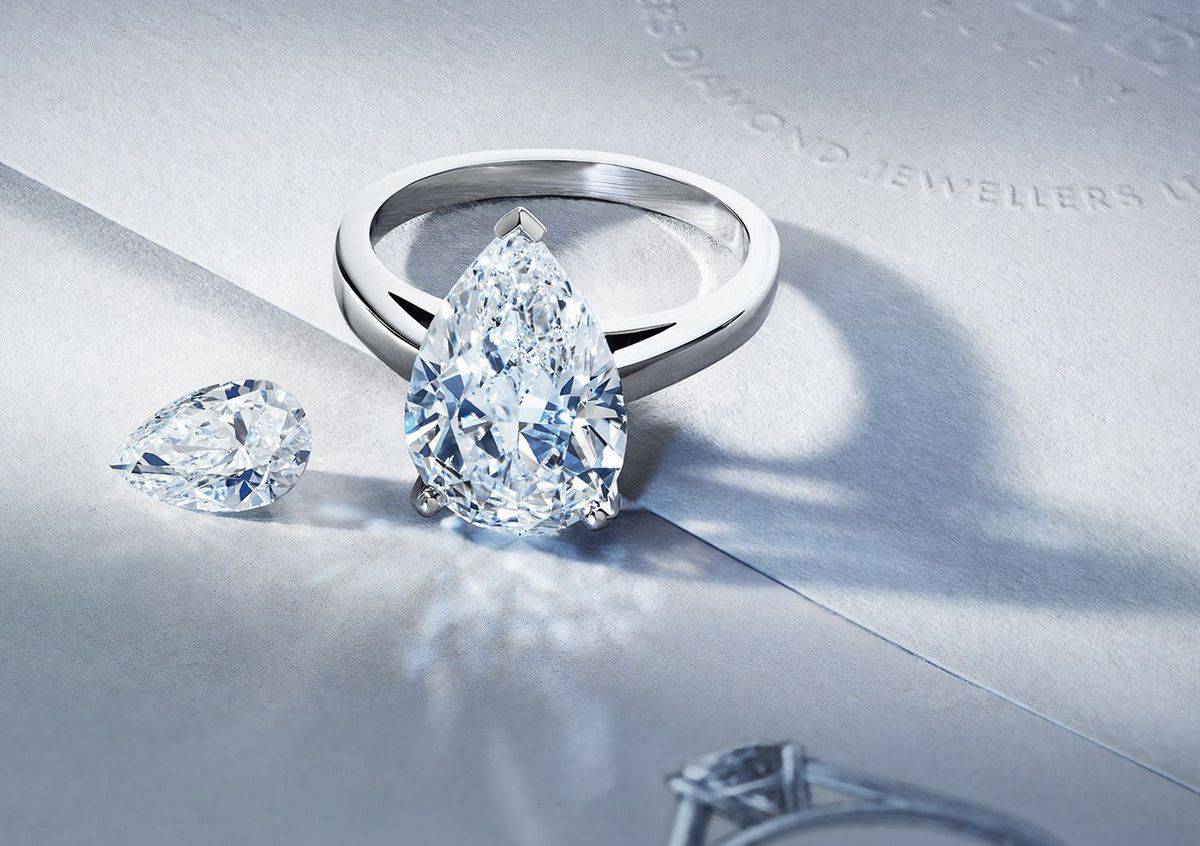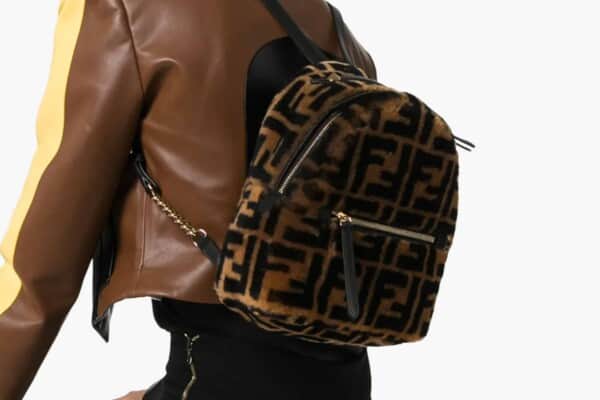Every diamond is beautiful. But how do you find the perfect diamond for you? In this post, we’ll guide you through every step of the diamond shopping process.
We’ll cover how to pick a shape, how to decide on the quality of your diamond, and how to balance carat weight with diamond quality in order to fit your budget. Read on to learn everything you need to know about picking the right diamond for your engagement ring.
Step 1: Decide on Your Shape
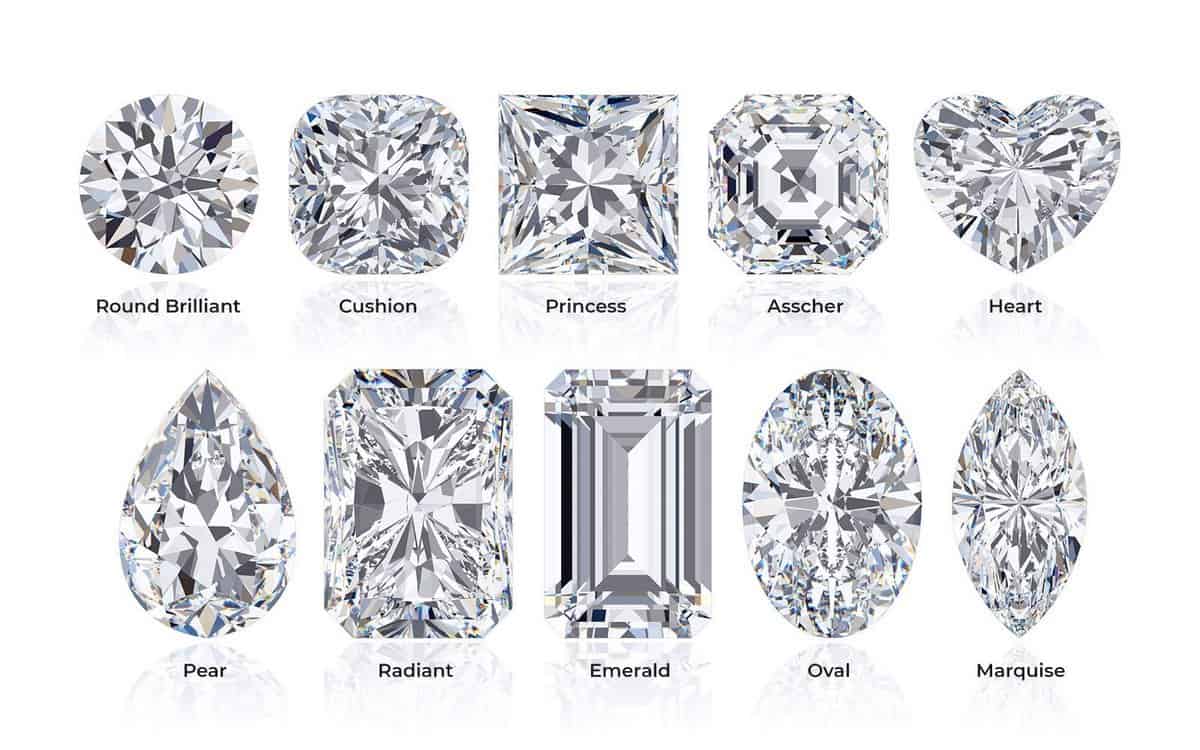 The first step in the diamond buying process is deciding on your diamond shape. Diamond shape is not to be confused with diamond cut, one of the Four Cs. While diamond cut is a quality grading, diamond shape is the shape a diamond is cut into.
The first step in the diamond buying process is deciding on your diamond shape. Diamond shape is not to be confused with diamond cut, one of the Four Cs. While diamond cut is a quality grading, diamond shape is the shape a diamond is cut into.
There are many different diamond shapes to choose from. The most popular diamond shape is the round brilliant. Around half of all diamond sold today are round brilliant diamonds.
Then, there are the fancy shaped diamonds, which is a category that includes every shape that is not round. Shapes that fall into the fancy shaped diamond category include princess cut, oval cut, cushion cut, marquise, emerald cut, asscher cut, and heart shaped diamonds.
When shopping for a diamond, we recommend choosing your shape first because diamond shape sets the style of an engagement ring. If you’re unsure which shape’s style may be right for you, below are some notes on your diamond shape options.
- Round-cut: A traditional diamond shape loved for its high brilliance and perfect for classic engagement rings.
- Princess-cut: A contemporary diamond shape that creates a sleek, modern look.
- Oval-cut: A sophisticated diamond shape that has an elongating effect.
- Cushion-cut: A vintage-style diamond shape with a romantic look.
- Marquise-cut: A highly unique shape with an eye-catching look.
- Emerald-cut: A retro era vintage diamond shape with a chic style.
- Asscher-cut: An art deco era vintage diamond shape with distinctive geometric facets.
- Heart-cut: A unique, romantic diamond shape.
Step 2: Decide Your Ideal Quality
After you’ve decided on your diamond shape, it’s time to think about diamond quality. Diamond cut, diamond color, and diamond clarity are all quality gradings that can affect how beautiful a diamond is to you. In this section, we’ll talk about what these gradings mean for the look of a diamond and give tips on what experts usually recommend you choose.
Diamond Cut
Diamond cut is a grade that tells you how well a diamond was cut. Most gemologists and jewelry experts agree that diamond cut is something you should prioritize when selecting a diamond. This is because diamond cut has an enormous impact on how well a diamond reflects and refracts light. If a diamond is well cut, it will capture and emit light beautifully, creating high brilliance. If it has a subpar cut, it will loose light and look dull or dim.
There are five different grades for diamond cut: Excellent, Very Good, Good, Fair, and Poor. Generally, for an engagement ring’s center diamond, experts recommend selecting a diamond with an Excellent or Very Good cut to ensure high brilliance.
Diamond Color
Diamond color is a grade that tells you how colorless a white diamond is. The diamond color grade scale ranges from D to Z, with D being completely colorless and Z being noticeably yellow.
Selecting the right diamond color for you often comes down to personal preference. However, most people do prefer that a white diamond is not noticeably yellow. Diamonds graded at the top of the color grade scale tend to be very expensive. Yet, most people cannot tell the difference between a colorless (D to F) and a near colorless (G to J) white diamond.
So we would say that if color is a high priority for you and your budget allows it, go with a diamond in the colorless range. If color is a high priority for you but you want a better value, go with a G or H color diamond.
Diamond Clarity
Diamond clarity is a grade that tells you how flawless a diamond is. When diamonds form naturally in the earth over thousands of years, they can be exposed to elements that create flaws. These flaws can look like scratches or darkened spots. Internal diamond flaws are called inclusions and external diamond flaws are called blemishes.
Diamond clarity is graded on a scale of FL (Flawless) to I3 (Included). Generally, experts recommend going with a clarity grade of VS2 or higher for a diamond used in an engagement ring to avoid noticeable flaws.
Step 3: Balance Carat Weight, Quality, and Budget
Lastly, you should decide on how you want to balance your desired diamond carat weight with diamond quality and your budget. Diamond carat, a weight measurement that can give you an idea of a diamond’s size, is perhaps the most well known of the 4Cs. When shopping for a diamond for an engagement ring, many people will already have an idea of the carat weight they want.
For example, you may know that the recipient of this diamond would want a one carat diamond or a two carat diamond. However, diamond carat has the largest impact on a diamond’s price. So if you’re working within a budget, you may need to strike a balance between the different diamond qualities to get the carat weight you want.
In Step 2, we talked about how low experts usually recommend you go for cut, color, and clarity grades. However, if you start browsing and find that you can’t find a diamond with in these lower end ranges that is also the size you’re looking for, consider going a bit below these recommendations.
Going lower in clarity can work well for brilliant cut shapes, which have many small facets than can hide flaws. But for step cut shapes, like emerald and asscher cut diamonds, you may not want to compromise on clarity, as it’s easier to spot flaws within these shapes. If you want to go lower with your diamond’s color, you can consider going as low as a K color grade diamond.
Then, pairing this K grade diamond with a yellow gold or rose gold setting. These warmer precious metals can complement a less white diamond and can conceal color better than a white setting. Lastly, you can consider going lower in diamond cut grade. You can sometimes go as low as Good for round diamonds and Fair for fancy shaped diamonds and still find the diamond’s sparkle beautiful. However, since cut is so important for brilliance, experts usually recommend going lower in clarity and color before sacrificing on cut.

